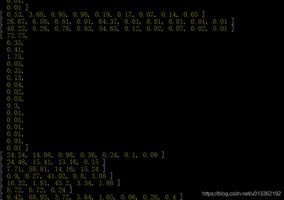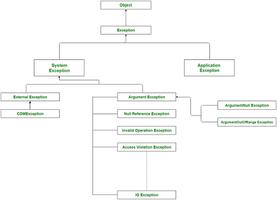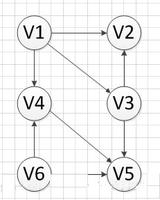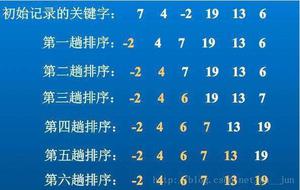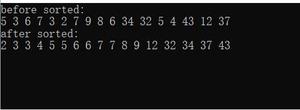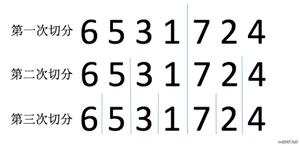在链表上实现归并排序算法的 C++ 程序
归并排序技术基于分治技术。我们将 while 数据集分成更小的部分,并按排序顺序将它们合并为一个更大的部分。它对最坏情况也非常有效,因为该算法在最坏情况下也具有较低的时间复杂度。
链表可以非常有效地使用归并排序进行排序。对于链表,合并任务非常简单。我们可以简单地更新链接以合并它们。在本节中,我们将看到如何使用这种方法对链表进行排序。
归并排序技术的复杂性
时间复杂度-O(n log n)适用于所有情况
空间复杂度-O(n)
Input − The unsorted list: 14 20 78 98 20 45Output − Array after Sorting: 14 20 20 45 78 98
算法
合并列表(ll1,ll2)
输入- 它需要两个链表 ll1 和 ll2
输出- 合并列表
Beginif ll1 is empty, then
return ll2
if ll2 is empty, then
return ll1
if data(ll1) <= data(ll2), then
new_head = ll1;
next(new_head) = mergeList(next(ll1), ll2)
else
new_head = ll2;
next(new_head) = mergeList(ll1, next(ll2))
return new_head
End
split_list(开始,ll1,ll2)
输入- 链表的起始指针,两个输出参数 ll1 和 ll2
输出- 从链表生成的两个链表
Beginslow := start
fast := next(start)
while fast is not null, do
fast := next(fast)
if fast is not null, then
slow := next(slow)
fast := next(fast)
end while
ll1 := start
ll2 := next(slow)
next(slow) := null
End
mergeSort(start)
输入- 链表
输出- 排序链表
Beginhead = start
if head is null or next(head) is null, then
return
split_list(head, ll1, ll2)
mergeSort(ll1)
mergeSort(ll2)
start := mergeList(ll1, ll2)
End
源代码 (C++)
#include<bits/stdc++.h>输出结果using namespace std;
class node { //定义节点来存储数据和下一个地址
public:
int data;
node *next;
};
void display(class node* start) {
node* p = start; // 当前节点设置为头部
while(p != NULL) { //遍历直到当前节点不为空
cout << p -> data << " ";
p = p -> next; // 转到下一个节点
}
}
node* getNode(int d) {
node* temp = new node;
temp -> data = d;
temp -> next = NULL;
return temp;
}
node* mergeList(node* ll1, node* ll2) { //合并两个排序列表的函数
node* newhead = NULL;
if(ll1 == NULL)
return ll2;
if(ll2 == NULL)
return ll1;
//递归合并列表
if(ll1 -> data <= ll2 -> data) {
newhead = ll1;
newhead -> next = mergeList(ll1->next,ll2);
} else {
newhead = ll2;
newhead -> next = mergeList(ll1,ll2->next);
}
return newhead;
}
void splitList(node* start, node** ll1,node** ll2) {
//类似于 flyod 的乌龟算法
node* slow = start;
node* fast = start -> next;
while(fast!= NULL) {
fast = fast -> next;
if(fast!= NULL) {
slow = slow -> next;
fast = fast -> next;
}
}
*ll1 = start;
*ll2 = slow -> next;
//spliting
slow -> next = NULL;
}
void mergeSort(node** start) {
node* head = *start;
node* ll1,*ll2;
//基本情况
if(head == NULL || head->next == NULL) {
return;
}
splitList(head,&ll1,&ll2); //将列表分成两半
//排序左右子列表
mergeSort(&ll1);
mergeSort(&ll2);
//合并两个排序列表
*start = mergeList(ll1,ll2);
return;
}
int main() {
cout << "创建链表: " << endl;
cout << "Enter 0 to stop building the list, else enter any integer" << endl;
int k,count = 1,x;
node* curr,*temp;
cin >> k;
node* head = getNode(k); //构建列表,第一个节点
cin >> k;
temp = head;
while(k) {
curr = getNode(k);
temp -> next = curr;//附加每个节点
temp = temp -> next;
cin >> k;
}
cout<<"排序前: " << endl;
display(head); // 显示列表
cout<<"\nAfter sorting: " << endl;
mergeSort(&head);
display(head);
return 0;
}
创建链表:Enter 0 to stop building the list, else enter any integer
89
54
15
64
74
98
10
24
26
0
排序前:
89 54 15 64 74 98 10 24 26
After sorting:
10 15 24 26 54 64 74 89 98
以上是 在链表上实现归并排序算法的 C++ 程序 的全部内容, 来源链接: utcz.com/z/351641.html

